Email clients constantly update their spam filters and tighten security measures. That means even perfect, well-intentioned emails can easily end up in the spam folder.
The good news is that you still have a lot of control over whether your emails go to the spam folder or not.
Why Are Your Emails Ending Up in the Spam Folder?
Your emails end up in the spam folder for the following reasons:
- Suspicious subject lines: Spam filters often flag emails with overly promotional or misleading subject lines that don’t match the email content.
- Unverified sender information: Emails from unauthenticated senders will likely land in spam folders.
- Spammy content: Too many links, excessive attachments, or poor grammar raise red flags.
- Unhealthy email list: Sending emails to outdated email addresses and people who haven’t opted into your list leads to high bounce rates and spam complaints.
- Inconsistent sending patterns: Spam filters are triggered if you suddenly go from sending very few emails to sending a large volume.
Understanding these reasons helps you prevent emails from going to spam mail altogether.
How To Keep Emails Out of Spam
Here’s how to stop emails from going to spam mail:
1. Use a Reputable Email Service Provider (ESP)
Reputable email service providers (ESP) have cultivated strong relationships with Internet Service Providers (ISPs) and email clients. These relationships help them maintain a positive sender reputation and ensure that emails sent through their platforms are not marked as spam messages.
They also offer advanced features like email warm-up, spam filter testing, list management, and detailed analytics to improve sender reputation and avoid email deliverability issues.
2. Create Your Own Email List
Unlike purchased email lists (often filled with unverified addresses) an email list you’ve built from scratch has subscribers who have consented to receiving your emails. This reduces bounce rates and the chances of your messages being reported or marked as spam emails.
Use the following tactics to build an email list:
- Use sign-up forms
- Offer valuable incentives in the form of lead magnets
- Leverage contests and giveaways that require participants to enter email addresses
- Use dedicated lead-generation landing pages
Additionally, make it easy for your email subscribers to opt out. A clear and accessible unsubscribe link helps maintain a healthy list and prevents spam complaints. It is also a legal requirement under the CAN-SPAM Act.
3. Use Double Opt-In
After a user signs up to join your list, send them a confirmation email asking them to verify their subscription.
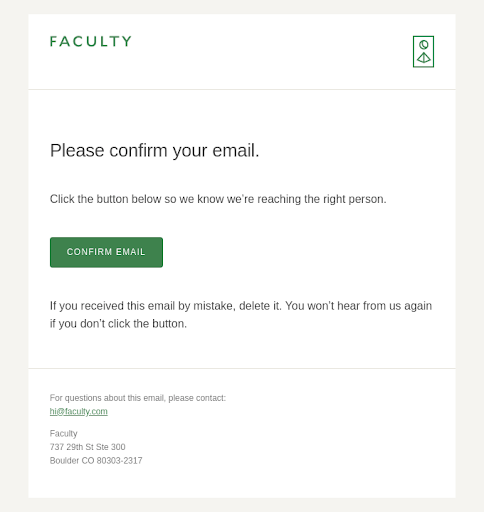
This is an effective way to prevent emails from going to spam mail because it ensures only legitimate emails stay on your mailing list.
4. Clean Your Email List Regularly
Maintaining a clean email list is essential for good deliverability, so remove invalid or dormant email addresses.
This is too tasking to do manually, so tools like Voila Norbert come in handy here. Voila Norbert offers excellent email verification features that help you quickly verify emails in bulk. Plus, it can help you find your email contacts’ most recent addresses.
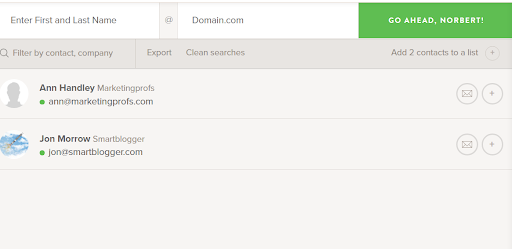
But when do you know it’s time to clean your email list?
Any time you notice a steady dip in engagement rates, such as open and click-through rates, you know it’s time to take action.
5. Authenticate Your Email
Email authentication protocols verify that your email is coming from a trusted source. Email programs like Gmail and Yahoo have also made it mandatory for all senders to pass email authentication protocols like SPF, DKIM, and DMARC.
- SPF: SPF verifies that the email is sent from an IP address authorized by the domain’s administrators.
- DKIM: DKIM adds a digital signature to your emails. This helps recipients verify that the email was sent by an authorized server and has not been tampered with during transit. Running a DKIM Record Check can help ensure your authentication is properly configured.
- DMARC: DMARC builds on SPF and DKIM by specifying how email receivers should handle messages that fail authentication checks.
Various online tools can help you verify these protocols. However, most reputable ESPs provide tools to set up, manage, verify, and monitor the authentication protocols’ records.
6. Warm Up Your Email
When you start sending emails to a new list or if you’ve been inactive for a while, don’t send large volumes of emails all at once. Instead, warm up your email account by sending smaller batches first and then gradually increasing the volume.
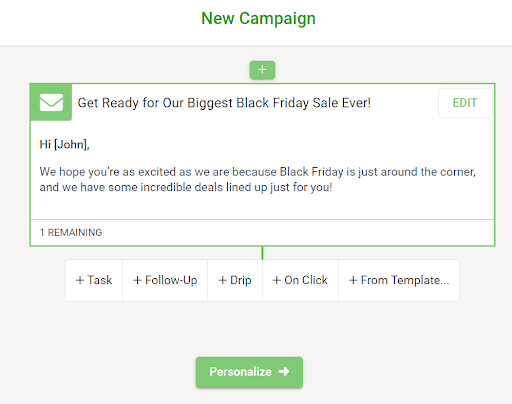
Our email sequences tool can help you with the email warm-up process by automating the gradual email sends. The tool also provides insights into how your emails perform so you can adjust your strategy to maintain high deliverability.
7. Craft Quality Email Content
High-quality content engages your audience and establishes trust and credibility — essential for maintaining a good sender reputation.
To create quality email content, first ensure you fully understand your recipients’ demographics, interests, and pain points. Then, share content that is directly relevant to them. Use a mix of text, images, and videos to make your emails more engaging.
Additionally, leverage personalization to make your emails feel more tailored. Use the customer data you have to personalize your email by including the recipient’s name, referencing past interactions, or suggesting products based on their behavior.
Finally, steer clear of common spam triggers like overly promotional language, all caps, and excessive punctuation.
8. Use Spam Checkers
Before sending out your email campaigns, run them through a spam checker tool to catch potential issues. These tools analyze subject lines, email body content, and links before generating a report with your spam score.
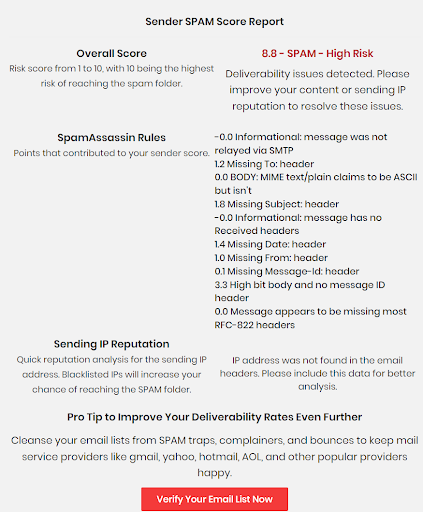
Some popular spam checkers include MailReach, MailTester, IPQS Spam Test, SpamScore, and Unspam.
9. Ask Subscribers to Allowlist Your Email Address
Asking subscribers to add your email address to their allowlist or address book ensures that future emails are recognized as safe and trustworthy.
Include a CTA in your welcome email while the recipients are still highly engaged, asking them to allowlist your email address.
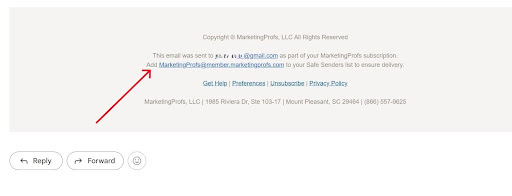
Inform your subscribers why it’s beneficial for them to allowlist your email address. For instance, explain that it’ll ensure they don’t miss out on important updates, special offers, or valuable content.
10. Use Email Branding
Consistent and recognizable branding will establish trust with your email recipients and ESPs. This improves engagement and deliverability rates.
Send emails from a branded address that matches your domain name. For more credibility, use a real front person, like the CEO or COO, as the sender address.
Besides that, align other elements like your images, fonts, headers, text, links, and even email layouts with your branding identity. Also, include recognizable elements like your logo to reinforce your brand identity and make your emails easily identifiable.
Lastly, ensure that the language and tone of your email content align with your brand’s voice to create a more cohesive experience for recipients.
11. Avoid Link Shorteners and Attachments
Link shorteners can be flagged as suspicious by spam filters. So, instead, use full URLs in your emails or opt for CTA buttons. Make sure all links in your emails are relevant and lead to trustworthy and secure websites.
Additionally, be cautious with attachments. Too many attachments or large files can easily trigger spam filters. When possible, provide direct links to your content rather than attaching files directly to your emails.
In Closing
Keeping your emails out of the spam folder is key to effective email communication. With evolving algorithms and stricter spam filters, you must be proactive to prevent emails from going to the spam.